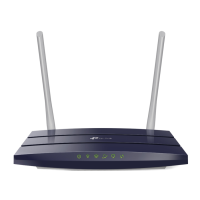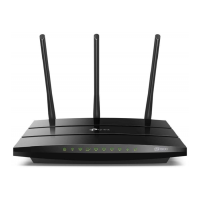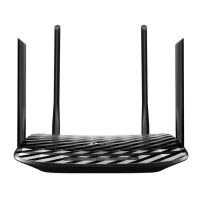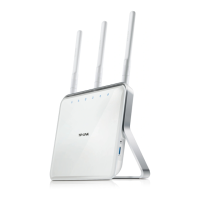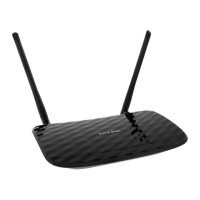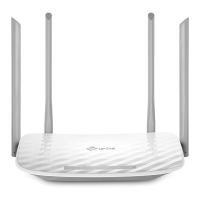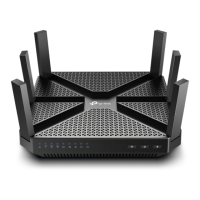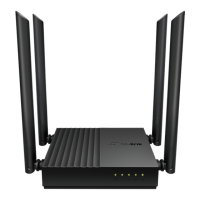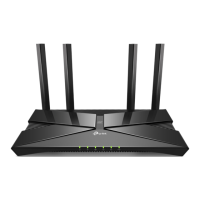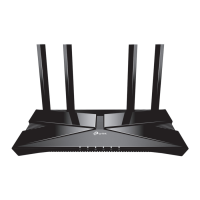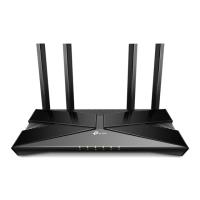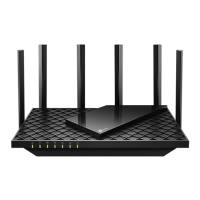Do you have a question about the TP-Link Archer Air R5 and is the answer not in the manual?
Step-by-step instructions for physically connecting the router to the modem and power source.
Details how to access the router's web management page and set a login password.
Guides users through an automated process to configure the internet connection.
Provides steps to configure internet connection settings manually based on ISP information.
Customizes wireless network name (SSID), password, security, and advanced features like OFDMA/TWT.
Sets up a separate Wi-Fi network for guests with customizable SSID and password.
Details HomeShield features for protecting the network with analysis, IoT protection, and intrusion prevention.
Enables setting restrictions on internet access for family members, including content blocking and time limits.
Instructions for integrating another TP-Link router into the network as a satellite device.
Steps for adding a range extender to create a unified Wi-Fi mesh network.
Enables the SPI Firewall to protect the router and network from malicious traffic.
Allows blocking or allowing specific devices to access the network using Blacklist or Whitelist.
Secures the network by binding device IP addresses to their MAC addresses to prevent ARP attacks.
Enables sharing local network services with the internet by opening specific ports.
Guides on setting up an OpenVPN server for secure remote access to the home network.
Details methods for updating the router's firmware via auto-update or online/local upgrades.
Step-by-step instructions for physically connecting the router to the modem and power source.
Details how to access the router's web management page and set a login password.
Guides users through an automated process to configure the internet connection.
Provides steps to configure internet connection settings manually based on ISP information.
Customizes wireless network name (SSID), password, security, and advanced features like OFDMA/TWT.
Sets up a separate Wi-Fi network for guests with customizable SSID and password.
Details HomeShield features for protecting the network with analysis, IoT protection, and intrusion prevention.
Enables setting restrictions on internet access for family members, including content blocking and time limits.
Instructions for integrating another TP-Link router into the network as a satellite device.
Steps for adding a range extender to create a unified Wi-Fi mesh network.
Enables the SPI Firewall to protect the router and network from malicious traffic.
Allows blocking or allowing specific devices to access the network using Blacklist or Whitelist.
Secures the network by binding device IP addresses to their MAC addresses to prevent ARP attacks.
Enables sharing local network services with the internet by opening specific ports.
Guides on setting up an OpenVPN server for secure remote access to the home network.
Details methods for updating the router's firmware via auto-update or online/local upgrades.
| DSL WAN | No |
|---|---|
| Ethernet WAN | Yes |
| WAN connection type | RJ-45 |
| Wi-Fi band | Dual-band (2.4 GHz / 5 GHz) |
| Wi-Fi standards | 802.11a, 802.11b, 802.11g, Wi-Fi 4 (802.11n), Wi-Fi 5 (802.11ac), Wi-Fi 6 (802.11ax) |
| Top Wi-Fi standard | Wi-Fi 6 (802.11ax) |
| WLAN data transfer rate (max) | 2976 Mbit/s |
| WLAN data transfer rate (first band) | 574 Mbit/s |
| WLAN data transfer rate (second band) | 2402 Mbit/s |
| Product type | Tabletop router |
| Product color | White |
| Ethernet LAN data rates | 10, 100, 1000 Mbit/s |
| Ethernet LAN interface type | Gigabit Ethernet |
| Number of guest networks (5 GHz) | 1 |
| Security algorithms | WPA, WPA-PSK, WPA2, WPA2-PSK, WPA3 |
| Supported network protocols | IPv4, IPv6 |
| Certification | FCC, CE, RoHS |
| Storage temperature (T-T) | -40 - 60 °C |
| Operating temperature (T-T) | 0 - 40 °C |
| Storage relative humidity (H-H) | 5 - 90 % |
| Operating relative humidity (H-H) | 10 - 90 % |
| Power source type | USB |
| Package type | Box |
| Depth | 10.8 mm |
|---|---|
| Width | 148 mm |
| Height | 210 mm |
